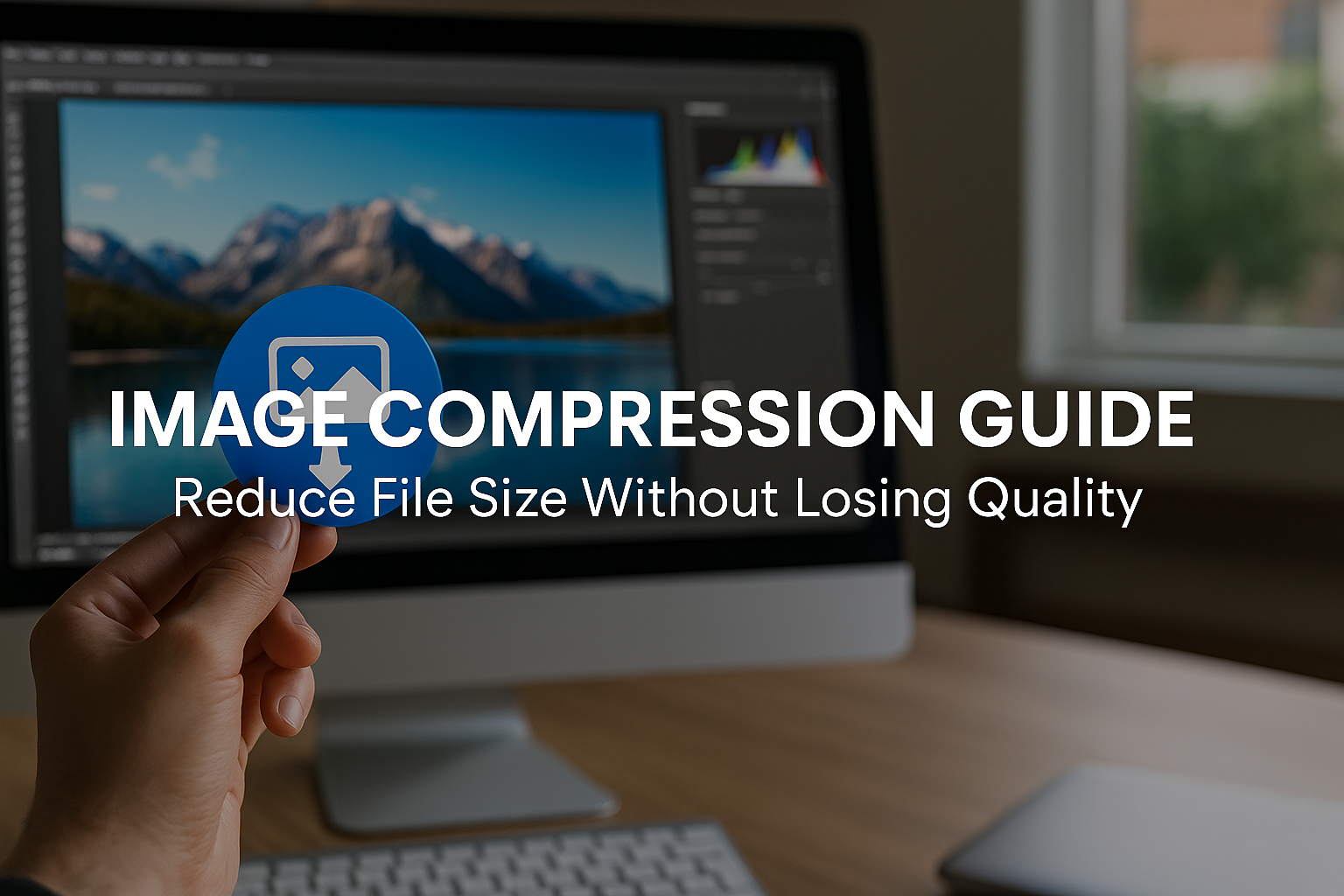
25
Image Compression Guide: Reduce File Size Without Losing Quality
Learn how to compress images online without losing quality. Discover lossy vs lossless compression, best formats (JPG, PNG, WEBP), SEO benefits, and how to use the free Recipeace Image Compressor tool.
Introduction: Why Image Compression Matters
Images are the backbone of modern websites. They make content engaging, improve user experience, and drive conversions. But large, unoptimized images can also slow down your site, hurt SEO rankings, and frustrate users.
That’s where image compression comes in. By reducing file size without sacrificing visible quality, you can keep your website fast, SEO-friendly, and mobile-ready.
In this guide, you’ll learn:
- What image compression is and how it works
- The difference between lossy and lossless compression
- Best formats for web images (JPG, PNG, WEBP)
- Tools to compress images online
- SEO benefits of optimizing your images
- Step-by-step guide to compressing images with Recipeace’s free tool
What Is Image Compression?
Image compression is the process of reducing the file size of an image by removing unnecessary data. The goal is to minimize storage and loading time while keeping quality as close to the original as possible.
There are two main types:
- Lossless Compression – Reduces file size without losing any detail. Perfect for logos, icons, and text-based images.
- Lossy Compression – Removes some data, slightly reducing quality but massively lowering file size. Ideal for photos and web use.
Why Is Image Compression Important?
- Faster Loading Speeds → Every extra second of load time can increase bounce rates.
- Better SEO → Google ranks faster websites higher.
- Lower Bandwidth Costs → Useful for hosting and mobile users.
- Improved User Experience → Faster, smoother browsing keeps users engaged.
Best Image Formats for the Web
- JPEG (JPG): Best for photos. High compression, small sizes.
- PNG: Supports transparency. Great for logos and graphics.
- WEBP: Modern format, smaller and better quality than JPG/PNG.
- SVG: Perfect for icons and scalable graphics.
How to Compress Images Without Losing Quality
1. Use Online Tools
👉 The Recipeace Image Compressor
reduces file sizes instantly without noticeable quality loss.
2. Adjust Compression Levels
- High compression = smaller file, lower quality.
- Low compression = larger file, better quality.
3. Resize Before Uploading
Never upload a 4000x4000 px image if your website only needs 1200x800 px.
4. Use the Right Format
- Photos → JPEG/WEBP
- Logos/Icons → PNG/SVG
SEO Benefits of Image Optimization
- Improved Page Speed: Google prioritizes faster websites.
- Better Mobile Experience: Smaller images load faster on 4G/5G.
- Higher Rankings in Image Search: Optimized images can drive traffic from Google Images.
- Core Web Vitals: Compressed images improve LCP (Largest Contentful Paint).
Advanced Image Compression Techniques
- Lazy Loading: Load images only when they’re visible on screen.
- Next-Gen Formats (WEBP/AVIF): Smaller file sizes with better quality.
- CDN Optimization: Content Delivery Networks auto-optimize images.
- Automation with Plugins: WordPress plugins like Smush or ShortPixel.
Step-by-Step: Compress an Image with Recipeace
- Go to Recipeace Image Compressor.
- Upload your image.
- Choose compression level (default is balanced).
- Download your optimized image instantly.
- Replace your old file on your website.
Case Study: Faster Websites with Image Compression
- A fashion eCommerce site reduced image sizes by 70% using WEBP.
- Result: Page load time dropped from 5s → 1.8s.
- SEO boost: Increased rankings, 20% more sales conversions.
Future of Image Compression
- AI-based compression will choose the best settings automatically.
- New formats like AVIF may replace WEBP for even smaller sizes.
- Browser-native optimization will handle resizing on the fly.
Conclusion: Small Files, Big Results
Image compression is one of the simplest but most effective ways to boost your website’s speed and SEO. By using tools like the Recipeace Image Compressor, you can save bandwidth, improve user experience, and get better rankings on Google — all without sacrificing image quality.
Summary SEO*
Learn how to compress images online without losing quality. Discover lossy vs lossless compression, best formats (JPG, PNG, WEBP), SEO benefits, and how to use the free Recipeace Image Compressor tool.
Contact
Missing something?
Feel free to request missing tools or give some feedback using our contact form.
Contact Us